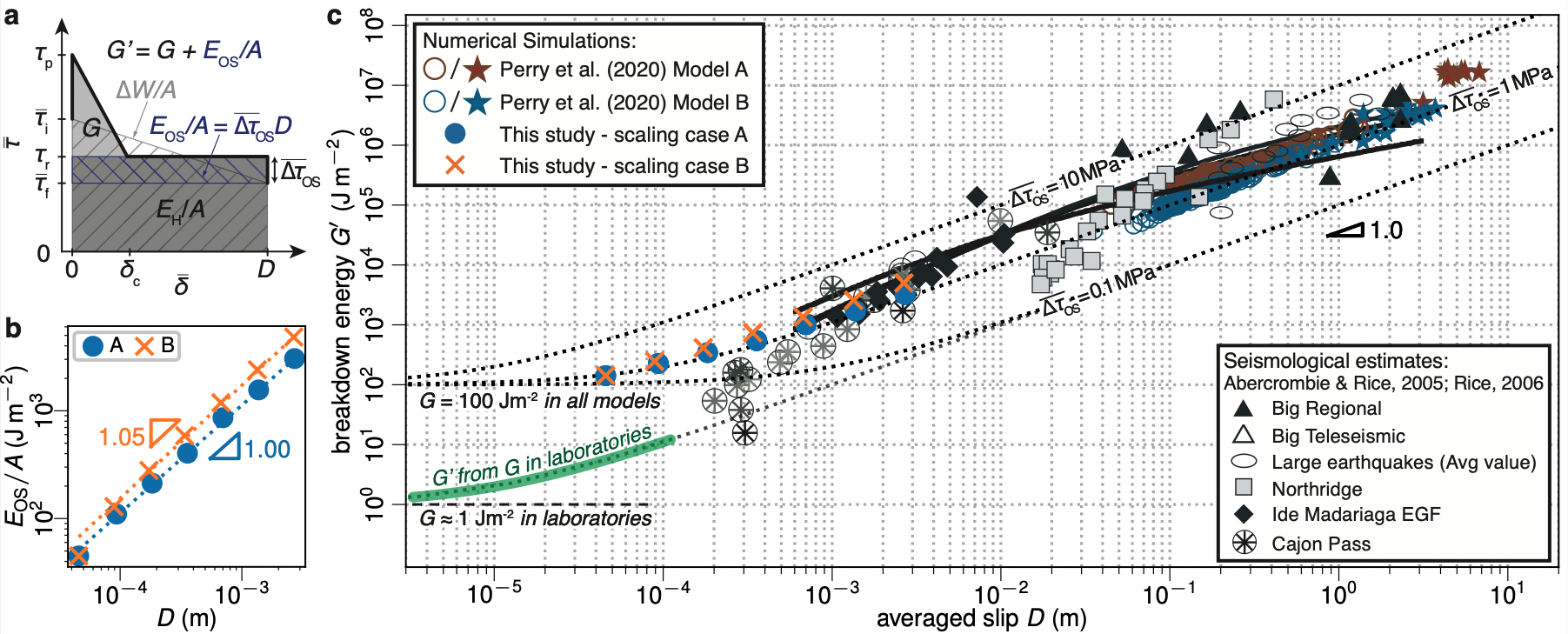Publication: Earthquake breakdown energy scaling despite constant fracture energy
Authors: Chun-Yu Ke, Gregory C. McLaskey, David S. Kammer
In the quest to determine fault weakening processes that govern earthquake mechanics, it is common to infer the earthquake breakdown energy from seismological measurements. Breakdown energy is observed to scale with slip, which is often attributed to enhanced fault weakening with continued slip or at high slip rates, possibly caused by flash heating and thermal pressurization. However, seismologically inferred breakdown energy varies by more than six orders of magnitude and is frequently found to be negative-valued. This casts doubts about the common interpretation that breakdown energy is a proxy for the fracture energy, a material property which must be positive-valued and is generally observed to be relatively scale independent. Here, we present a dynamic model that demonstrates that breakdown energy scaling can occur despite constant fracture energy and does not require thermal pressurization or other enhanced weakening. Instead, earthquake breakdown energy scaling occurs simply due to scale-invariant stress drop overshoot, which may be affected more directly by the overall rupture mode – crack-like or pulse-like – rather than from a specific slip-weakening relationship.

Ke, C.-Y., McLaskey, G. C. & Kammer, D. S. (2022) Earthquake breakdown energy scaling despite constant fracture energy. Nature Communications, 13, 1005. doi: 10.1038/s41467-022-28647-4